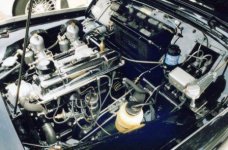M
Member 10617
Guest
Guest
Offline
I'm looking for an update on the question of what kind of a valve cover gasket to use: cork or silicone (by J. M. Wagner Sales Ltd.). I know that the Wagner silicone gaskets are much more expensive than cork, but I've read that depending on how they are installed (goo on top or goo on bottom), cork gaskets may not last very long. What has been your experience? Have the silicone gaskets lived up to expectations?

 Hi Guest!
Hi Guest!

 smilie in place of the real @
smilie in place of the real @
 Pretty Please - add it to our Events forum(s) and add to the calendar! >>
Pretty Please - add it to our Events forum(s) and add to the calendar! >> 


